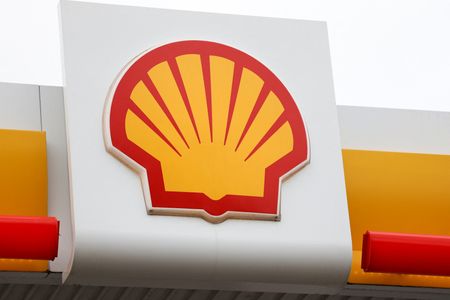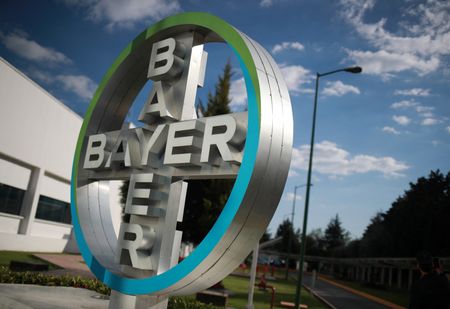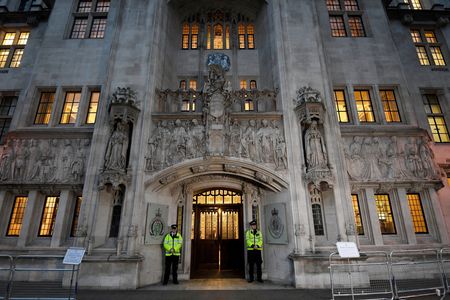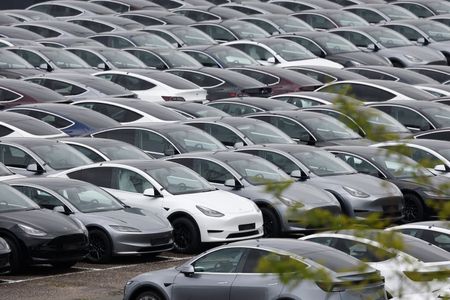By Shadia Nasralla
LONDON (Reuters) -Shell’s second-quarter net profit tumbled by almost a third on Thursday, dragged down by a drop in oil prices, lower gas trading results and outage-related losses from its chemicals operations, but it still easily beat analysts’ forecasts.
The oil major said it would maintain the pace of its share buyback programme at $3.5 billion over the next three months, the 15th consecutive quarter of at least $3 billion.
The company’s shares were up around 1.3% by 1525 GMT, outperforming a flat broader index of European energy companies.
Shell’s adjusted earnings, its definition of net profit, reached $4.26 billion in the quarter, smashing the $3.74 billion average in an analyst poll provided by the company but down 32% from a year ago.
All of Shell’s business units apart from integrated gas beat the average profit estimates in the poll.
Its marketing unit, which includes its fuel and charging retail stations, benefited from higher margins and achieved its best results in nearly a decade for the second quarter, Shell finance chief Sinead Gorman said.
Shell said it achieved $3.9 billion in cost cuts compared with 2022, part of a programme aimed at saving between $5 billion and $7 billion by the end of 2028.
It recorded cash flow from operations of $11.9 billion in the quarter, down from $13.5 billion a year ago.
The buybacks together with $2.1 billion in dividends brought shareholder distributions over last four quarters to 46% of operating cash flow, within its 40% to 50% guided range.
OIL PRICE SLUMP, ‘TOUGH’ CHEMICALS MARKET
The company had flagged weaker trading in its integrated gas division and losses at its chemicals operations after an outage at its U.S. Monaca polymer plant.
Shell, which is looking to find new partners or sell some of its chemicals assets, is getting Monaca back up and running again, said Gorman, who also pointed to general weak demand and margins in the industry.
“Goodness, I feel sorry for the chemicals industry. It’s a tough one,” she said.
Shell took a cautious, risk-off approach to oil trading in the quarter, Gorman added, because it saw a disconnect between price movements and supply-demand fundamentals.
Chief Executive Wael Sawan told CNBC on Thursday that volatility not based on fundamentals led Shell to trade less heavily in crude.
Rival BP, in contrast, said in a trading update ahead of its second-quarter results due on August 5 that it recorded a strong result in oil trading.
Crude oil prices fell in the quarter as OPEC+, made up of the Organization of the Petroleum Exporting Countries and allies such as Russia, began unwinding self-imposed production cuts.
Global benchmark Brent crude prices averaged around $67 a barrel during the April-to-June quarter, compared with $75 a barrel in the first quarter and $85 a year earlier.
Prices spiked briefly in June on the back of the conflict between Israel and Iran.
Meanwhile, after seeing muted demand for liquefied natural gas from Asia in the first half of the year, which allowed Europe to restock, Gorman said LNG markets could tighten again after the summer.
Both Sawan and Gorman flagged that they expected LNG markets to be marked by less volatility than in past years, providing Shell, as the world’s biggest LNG trader, fewer opportunities to reap benefits from arbitrage.
(Reporting by Shadia NasrallaEditing by David Goodman, Joe Bavier and David Gregorio)









